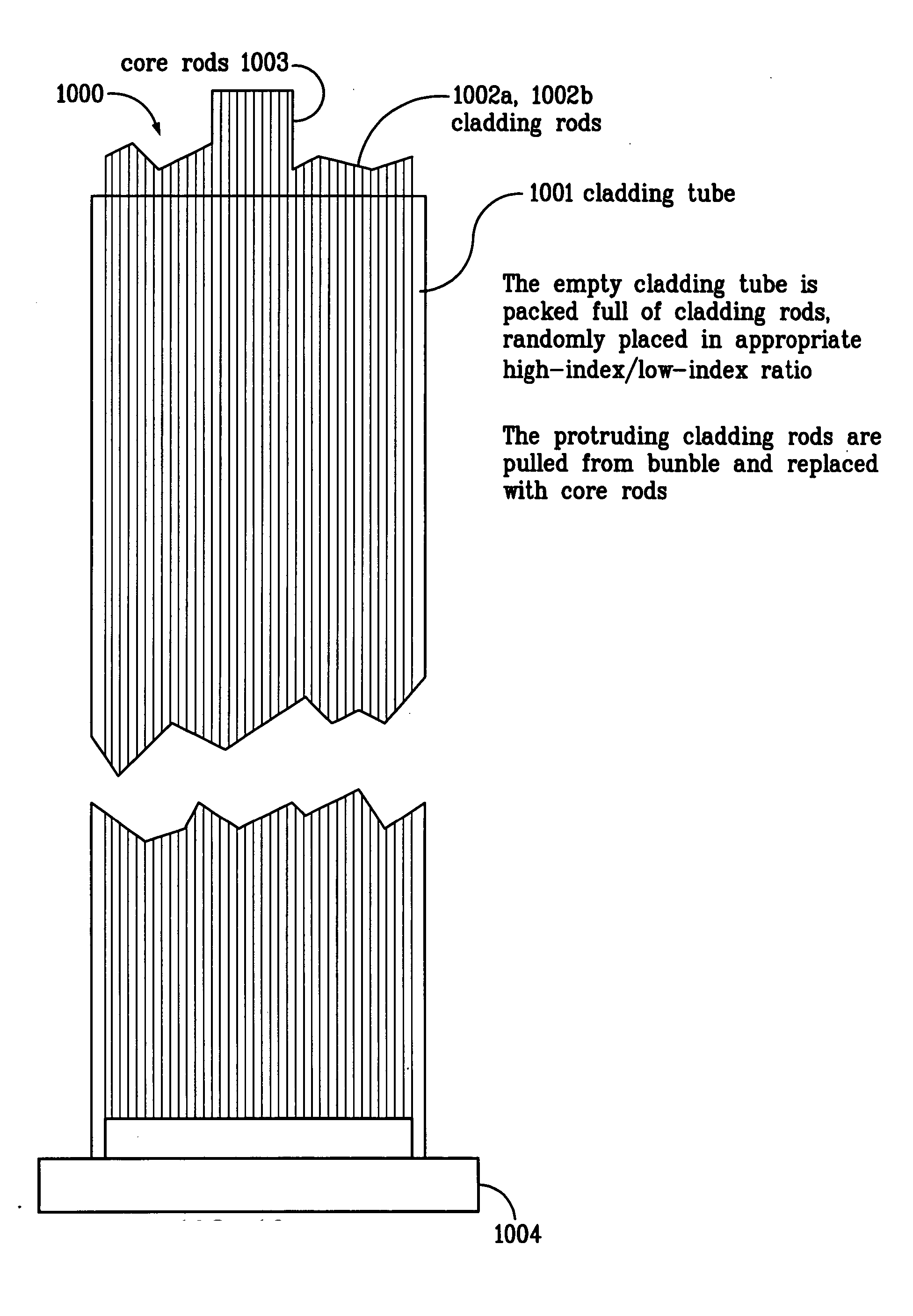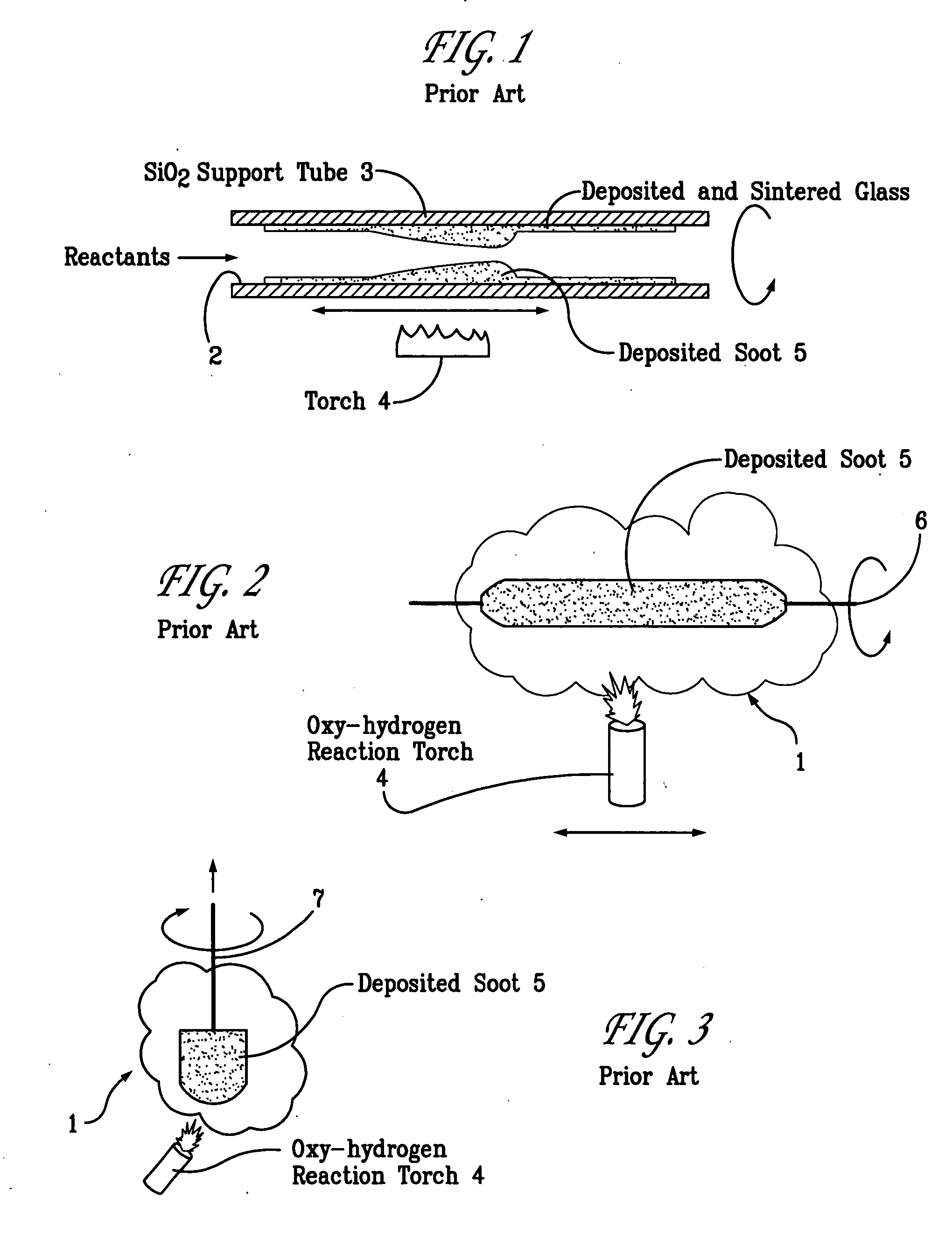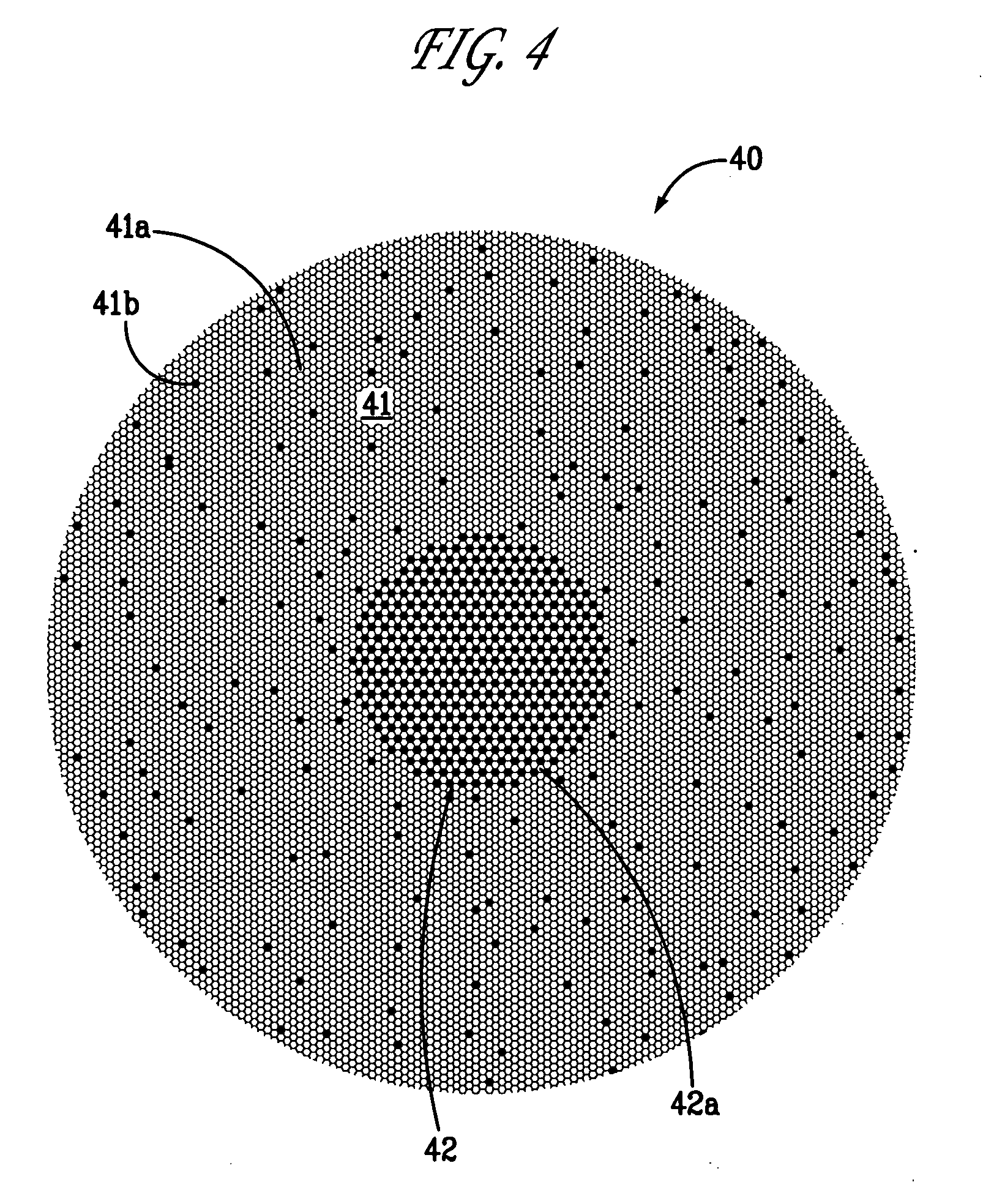Preform for producing an optical fiber and method therefor
a technology of fiberoptic preforms and fiberoptic fibers, which is applied in the direction of cladding optical fibres, manufacturing tools, instruments, etc., can solve the problems of difficult to deliver known and stable concentrations of dopant precursor species, difficult process control, and limited technique for implementing optical fiber designs having any but the most rudimentary characteristics, etc., to achieve high-controlled and controllable compositions, physical, chemical, optical properties, and the effect of high controllable composition
- Summary
- Abstract
- Description
- Claims
- Application Information
AI Technical Summary
Benefits of technology
Problems solved by technology
Method used
Image
Examples
Embodiment Construction
[0041]FIG. 4 is exemplary of the present invention, wherein preform 40 is fabricated from a large number of glass rods bundled together and then fused at high temperature. FIG. 4 shows such a preform, looking down the axis of the preform, prior to fusion. The preform shown in this example is for a rare-earth-doped fiber with a stepped refractive index core 42 of uniform dopant density (a “step-index” profile).
[0042] Core region 42 of the preform contains rods 42a fabricated from rare-earth-doped glass with a refractive index of ncore. Cladding region 41 of the preform contains two different types of glass rods, 41a and 41b, neither of which contains rare-earth dopants. One type of cladding rod has a refractive index slightly greater than the desired cladding refractive index, nclad. The other type of cladding rod has a refractive index slightly less than clad. The ratio of low-index / high-index cladding rods is chosen so that the average index of refraction in the cladding region is...
PUM
| Property | Measurement | Unit |
|---|---|---|
| temperature | aaaaa | aaaaa |
| temperature | aaaaa | aaaaa |
| thick | aaaaa | aaaaa |
Abstract
Description
Claims
Application Information
 Login to View More
Login to View More - R&D
- Intellectual Property
- Life Sciences
- Materials
- Tech Scout
- Unparalleled Data Quality
- Higher Quality Content
- 60% Fewer Hallucinations
Browse by: Latest US Patents, China's latest patents, Technical Efficacy Thesaurus, Application Domain, Technology Topic, Popular Technical Reports.
© 2025 PatSnap. All rights reserved.Legal|Privacy policy|Modern Slavery Act Transparency Statement|Sitemap|About US| Contact US: help@patsnap.com



